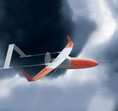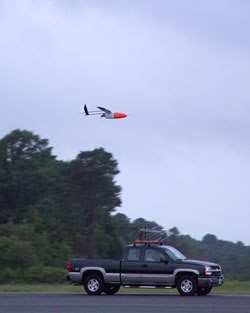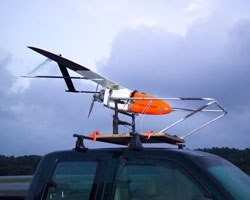Flights Will Be Conducted Over Unpopulated Training Area
The Federal Aviation Administration has issued a Certificate of
Authorization (COA) to Kansas State University to fly the
Aerosonde, an unmanned aerial vehicle operated by Flint Hills
Solutions LLC., over "Crisis City".

File Photo
Crisis City is an emergency response training area that is part
of Great Plains Joint Regional Training Center, and is adjacent to
the Air National Guard's Smoky Hill Weapons Range near Salina.
The FAA's authorization is the result of the combined efforts of
K-State at Salina, Flint Hills Solutions and the Salina Airport
Authority. The ability to fly over Crisis City opens the door to
more extensive training in search-and-rescue operations through use
of sites that include a mock disaster-struck city, crashed
transportation vehicles and a collapsed building.
"This is a major step in supporting unmanned aerial systems
projects for K-State at Salina aviation and will be extremely
helpful as we continue to partner with the public and private
entities to apply our research capabilities to this developing
technology to save lives and enhance emergency response," said
Dennis Kuhlman, dean of K-State at Salina. Kuhlman said the
authorized unmanned flights have already begun.

File Photo
A COA is a waiver that allows limited UAV flight in the national
airspace while the FAA develops regulatory airworthiness, collision
avoidance standards and certification requirements for unmanned
flight. Until now, K-State Aviation had been limited to flying the
Aerosonde in restricted airspace over the Smoky Hill Weapons
Range.
"The COA is a huge step in opening up the market for the
utilization of UAVs in emergency response scenarios," said Roger
Powers, CEO of Flint Hills Solutions. The company is based in
Augusta, KS. The next step for K-State will be to apply for
emergency COAs, allowing the Aerosonde to fly in different
locations across the state, including weather-related disaster
sites, within a matter of hours.
K-State's Unmanned Aerial Systems Program Office is home to the
Unmanned Aerial Systems Technology Evaluation Center that will
evaluate existing UAS technology and platforms for their
suitability in disaster response scenarios and train
operators/maintainers. The office also will house a full surface
mount technology lab devoted to unmanned aerial vehicle avionics
and payload miniaturization.
The UAS Program Office is operated by K-State's Applied Aviation
Research Center. The center's charter is to advance aerospace
technology through the application of research capabilities in
propulsion, airframe, avionics and aviation training. The program
office collaborates with military organizations and the private
sector to focus on developing unmanned flight in the nation's
airspace and training pilots and operators of unmanned aerial
systems.

File Photo
K-State also establishes criteria for unmanned aerial system
flight operations, including activity at the Smoky Hill Weapons
Range and eventually at the Herington unmanned aerial system flight
facility. The program office establishes policies and procedures to
enable both military and civilian organizations to fly and test at
the area facilities.
 Aero-News: Quote of the Day (04.28.25)
Aero-News: Quote of the Day (04.28.25) ANN's Daily Aero-Term (04.28.25): Decision Altitude (DA)
ANN's Daily Aero-Term (04.28.25): Decision Altitude (DA) ANN's Daily Aero-Linx (04.28.25)
ANN's Daily Aero-Linx (04.28.25) Airborne-Flight Training 04.24.25: GA Refocused, Seminole/Epic, WestJet v TFWP
Airborne-Flight Training 04.24.25: GA Refocused, Seminole/Epic, WestJet v TFWP Aero-News: Quote of the Day (04.29.25)
Aero-News: Quote of the Day (04.29.25)





